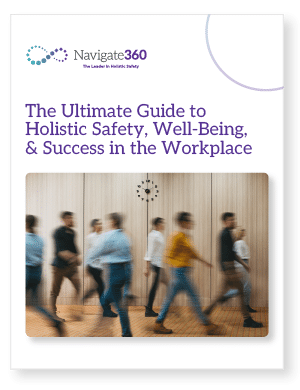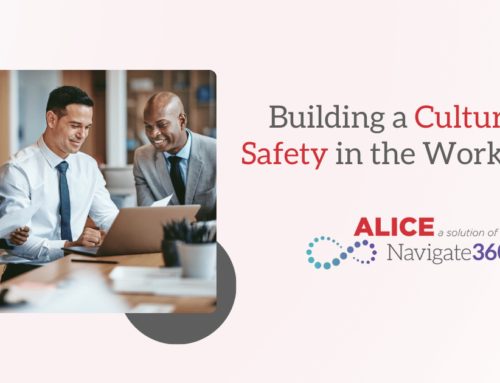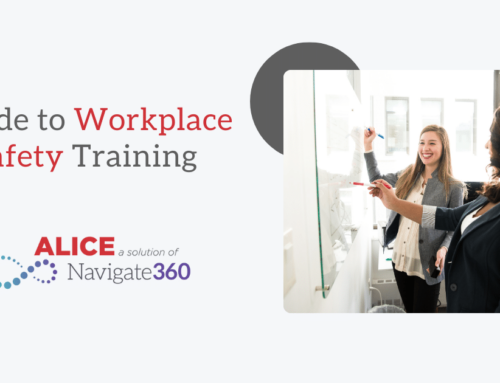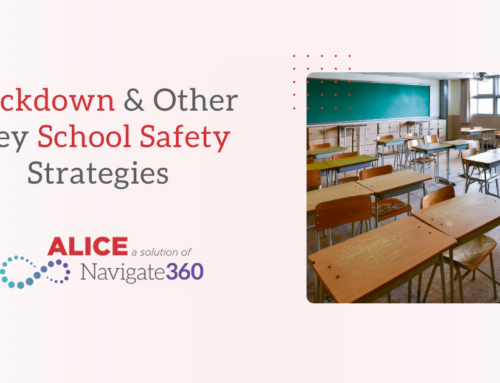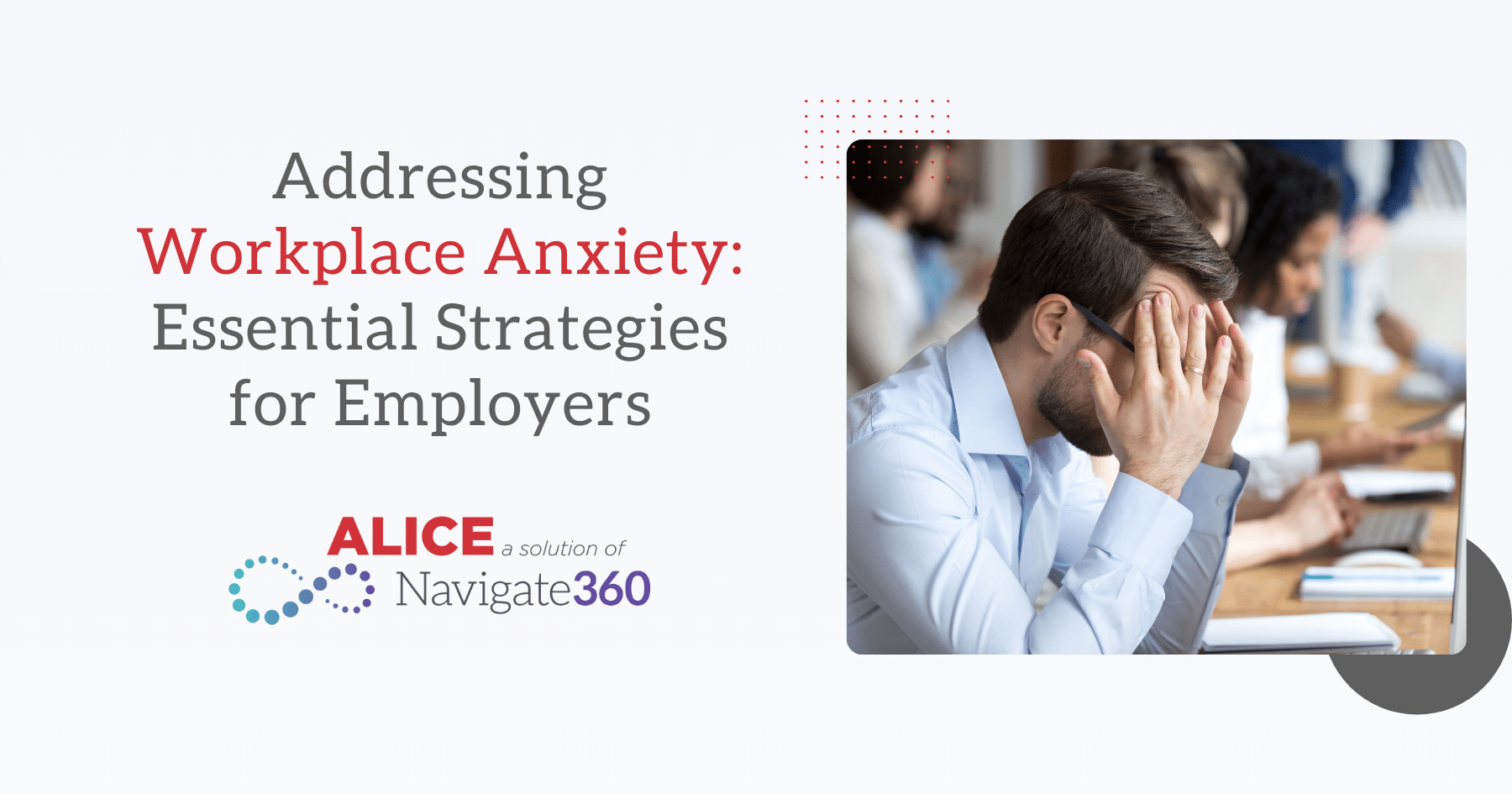
We are in a new era of uncertainty, where workplace safety and well-being have become top challenges for employers. Among these challenges, workplace anxiety is a growing concern, impacting both employee well-being and overall productivity.
Whether in-person or virtual, employees are increasingly stressed by isolation, fatigue, and disruptions. In the U.S., 83% of workers report work-related stress, with 25% identifying their job as their main stressor. This stress often leads to anxiety or other challenging, and even threatening behaviors.
This raises crucial questions about how companies address workplace anxiety and ultimately workplace safety. Leaders must ensure employees feel safe—physically, socially, and emotionally—by prioritizing communication, enhancing security, engaging remote workers, and supporting mental health.
Prioritizing Physical Safety to Alleviate Workplace Anxiety & Boost Well-Being
For employees to perform at their best, they need to feel both physically and psychologically secure. Recent data shows that 68% of workers don’t feel safe at work, often leading to workplace anxiety and highlighting the need for enhanced safety measures. When employees feel unsafe, their productivity and well-being suffer.
Physical safety is the foundation for mental well-being. A thorough risk assessment is crucial in identifying potential threats and improving security, which reassures employees that their safety is a top priority. This sense of protection enhances their overall well-being both at work and beyond.
Employers who take proactive measures to ensure physical safety foster an environment where mental health can thrive, directly boosting engagement, performance, and retention. By integrating risk assessments with effective training and solid safety protocols, organizations promote a culture that holistically supports employee well-being.
Empowering Employees Through Training to Reduce Workplace Anxiety
Structured training that addresses both physical safety and mental well-being can play a crucial role in reducing workplace anxiety. As incidents of workplace violence increase, offering flexible eLearning courses helps employees feel equipped to handle emergencies. Courses like De-escalation: How to Diffuse Aggression and Situational Awareness build confidence in managing threats, while training in Extreme Survival Stress and How to Properly Call 911 prepares them for high-pressure situations. Active shooter response training, such as ALICE Training®, further empowers employees by providing actionable options during critical incidents.
Employees tend to rise to the level of their training, and knowing exactly how to respond in an emergency greatly reduces anxiety. When employees are confident in their ability to act, they feel more secure, which leads to a calmer, more focused mindset in the face of potential threats.
Equally important is mental health support. Courses like Opioid & Addiction Awareness, Understanding Microaggressions, and Behavioral Threat Assessment empower employees to address both emotional and physical risks, while courses like Recovery: Trauma Response and Suicide Awareness & Prevention ensure a holistic approach to workplace safety.
By offering a comprehensive range of training, organizations foster a work environment where employees feel supported, prepared, and ultimately less anxious.
Effective Strategies to Manage Workplace Anxiety
In addition to risk assessments and training, employers should adopt broader strategies to reduce anxiety and enhance workplace culture:
Encourage Open Communication: Foster an environment where employees feel comfortable discussing mental health concerns. Empathetic conversations, supportive management, and clear feedback channels help build trust and reduce anxiety. When employees know their concerns are heard, it eases stress and creates a more inclusive environment.
Promote Mental Health Resources & Support: Providing access to mental health resources, such as employee assistance programs (EAPs), on-site counseling, or wellness days, signals to employees that their well-being is a priority. This support shows employees they have the tools needed to manage their mental health, reducing anxiety.
Implement Stress-Relief Initiatives: Offering flexible work hours, mental health days, and encouraging regular breaks can alleviate workplace anxiety. On-site wellness activities such as yoga, meditation, and relaxation spaces offer practical stress relief, allowing employees to manage daily pressures before they escalate.
Promote Work-Life Balance: Encourage employees to disconnect after work, take personal time, and use their vacation days. Flexible schedules and remote work options help create a healthier work-life balance, which is key to minimizing workplace anxiety.
Knowing that these broader strategies are in place not only reduces anxiety but empowers employees, giving them confidence that they can manage stressors and thrive in their roles. When employees feel equipped and supported, they are more likely to rise to challenges with resilience and clarity.
A Holistic, Proactive Approach to Workplace Anxiety
Addressing workplace anxiety requires a multifaceted approach that combines physical safety measures, personal well-being training, mental health awareness, and stress management strategies.
“Safety isn’t composed of loosely sewn-together solutions; it’s a complete culture, a holistically connected system that addresses prevention to recovery. A culture of safety puts people first and recognizes that the only way to enable people to reach their full potential is to make them feel safe—physically, socially, and emotionally.” — JP Guilbault, CEO of Navigate360
Navigate360 is at the forefront of redefining safety, encompassing both physical security and emotional well-being. As your partner in holistic safety, we provide the tools and training needed to create the safest possible environment where people work, learn, and gather.
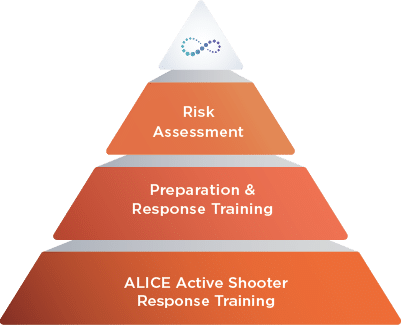
The Ultimate Guide to Safety, Well-Being, & Success in the Workplace
Download our guide and learn how to support your employees’ physical and mental health for a safer, more secure workplace.

